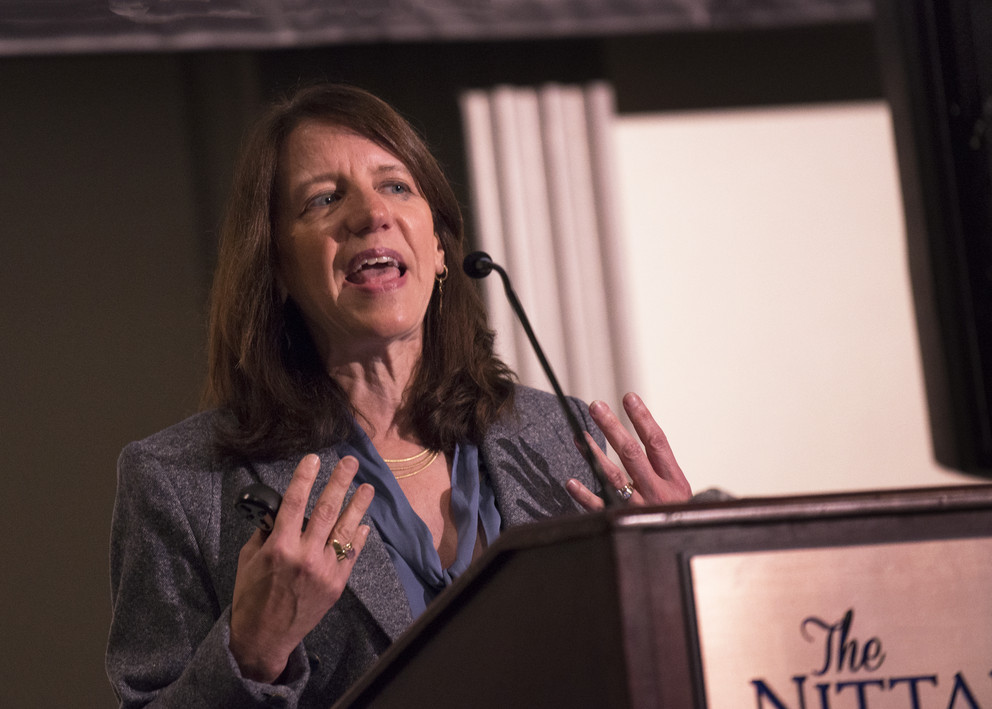
At the Nittany Lion Inn on Oct. 27, Penn State Senior Vice President for Research Lora Weiss spoke to a crowd of nearly 500 of the nation’s top science journalists about the importance of interdisciplinary collaboration and how Penn State is fostering research that breaks down traditional boundaries between academic disciplines.
As part of ScienceWriters 2019, an annual conference for science journalists hosted at a different research institution each year, Weiss illustrated how Penn State has already made a profound impact on the world through interdisciplinary research.
“In 1955 a professor of physics became the first person to be able to see an atom using a field ion microscope of his own design. Back in 1937 a chemistry professor, Russell Marker, discovered the first practical synthesis of a pregnancy hormone called progesterone, which we know has many medical applications including hormone and steroid therapy,” Weiss said. “And more recently, in 1992, Alexander Wolszczan, an Evan Pugh Professor of Astronomy and Astrophysics here, he was the first to discover planets outside of our solar system.”
That commitment to fostering innovation through interdisciplinary partnerships continues to be an important differentiator for Penn State’s research enterprise, she said.
“If you look at how Penn state achieves these accomplishments, we’ve taken on and created a whole new enterprise of interdisciplinary research institutes,” Weiss said. “We have seven major interdisciplinary research institutes. What is so important is that enterprise pulls not only from across University Park, but also our 22 Commonwealth Campuses.”
Weiss noted that Penn State researchers have written on more than 15,000 topics in the last five years alone. Much of that research output exists at the intersection of multiple disciplines, which Weiss said is made possible by Penn State “breaking the traditional disciplinary research boundaries” in order to “enable breakthroughs of inordinate proportion.”
“What’s even more impressive is that these interdisciplinary research institutes have been collaborating. We have the Social Science Research Institute collaborating with the Huck research institutes [life sciences], and with our cyberscience research institute,” Weiss said. “So, really, the interdisciplinary nature of our work is expanding.”
Weiss concluded by noting that Penn State’s commitment to collaboration across disciplines makes the University’s researchers invaluable resources for the journalists who communicate to the public about scientific breakthroughs and the challenges facing society.
“We all know these pressing challenges are becoming more and more complex and require interdisciplinary teams. So when you, as writers, seek an explanation to understand a phenomena, you need to interact with experts and scientists who get the big picture,” Weiss said. “When Penn State pursues this interdisciplinary work, we really are thinking about the whole system.”
ScienceWriters 2019 was co-sponsored by Penn State’s Office of Strategic Communications and the Office of the Senior Vice President for Research, who worked together to bring the conference to campus.